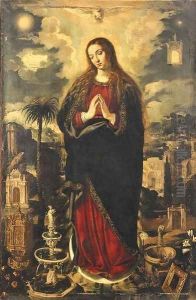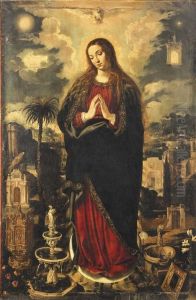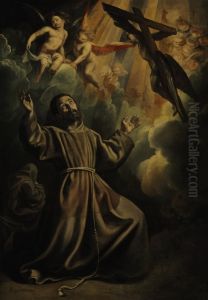Vicencio Carducho Paintings
Vicente Carducho, also known as Vicencio Carducho, was a prominent painter of the Spanish Baroque era. Born between 1576 and 1578 in Florence, Italy, he was the brother of Bartolomeo Carducci (Carducho), who was also a painter. Vicente's actual birth date is somewhat uncertain, but his career is well-documented. He moved to Spain with his brother in 1585, where they both worked at the Spanish court.
Carducho was deeply influenced by the Italian painting tradition, as well as the Mannerist style that was prevalent in the late Renaissance. However, his work also reflects the transition to the early Baroque period. After his brother's death in 1608, Vicente became the head of the royal painting workshop, a position that cemented his status as one of the most important painters in Spain during the first half of the 17th century.
His body of work includes religious paintings, portraits, and historical compositions. One of his most significant projects was a series of 54 paintings for the Carthusian monastery of Paular, which depicted scenes from the lives of the Carthusian saints and the foundation of the order. This series is considered one of his masterpieces and reflects his narrative skill and his ability to capture the spiritual intensity of religious subjects.
Carducho was also an art theorist, and his written work 'Diálogos de la pintura', published in 1633, is an important source for understanding the art and aesthetics of his time. In this treatise, he argued for the intellectual and noble nature of painting as an art form.
Vicente Carducho died in 1638 in Madrid, Spain. His legacy lived on through his significant contributions to Spanish art and his influence on subsequent generations of artists. Today, his works can be found in various museums and collections, admired for their technical skill and evocative power.


